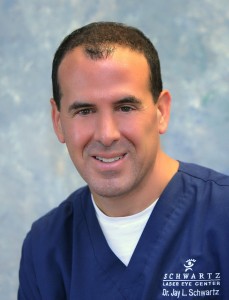Latest technology to improve your vision
Aug 22, 2017, 2:29 PM | Updated: Sep 4, 2018, 4:34 pm

Vision problems have been around as long as humankind. For hundreds of years, the only means people had for vision correction involved looking through some sort of glass lens. That all changed in the late 1990s, when doctors began using lasers to reshape and repair eyes.
Today, eye doctors can permanently repair or cure a range of vision problems, using technology unimagined just a few years ago.
In fact, many patients who have been told they were not good candidates for Lasik now have other treatment options available. If you have vision problems and would like to be free of glasses or contacts, this is a great time to consult with an experienced eye surgical specialist to discuss treatment possibilities.
Here are some of the updated technologies.
Wave scanning
In addition to nearsightedness, farsightedness and astigmatism, most people have other small distortions in their eyes, as well. Traditional Lasik corrects the major problems but makes these other aberrations worse, according to information from the Food & Drug Administration.
Wavefront technology measures the subtle distortions and adjusts the Lasik treatment to account for them. Studies show, with wavefront-guided treatments, a higher percentage of subjects achieved 20/20 vision without glasses or contact lenses when compared to subjects treated with conventional Lasik. The FDA notes the experience and competence of the surgeon and the specific condition of the patient are still the most important considerations.
Kamra Inlay/
The KAMRA Inlay can eliminate the need for reading glasses for patients that lose their ability to read up close because of age (presbyopia). The Kamra Inlay received FDA approval in April 2015. In a brief surgical procedure (usually less than 10 minutes), a doctor uses a laser to create a small pocket or flap in the cornea. A tiny inlay is inserted into the pocket or under a flap in the center of the cornea. This allows focused light into the eye. The inlay is usually inserted into the patient’s non-dominant eye, and the brain allows both eyes to work together to give the patient clear vision.
The inlay is only about 0.15 inch in diameter — about half the thickness of the plastic wrap used to store food. Although it rarely happens, if the inlay causes problems, it can easily be removed.
Multi-focal implants
Implants are generally used after cataract removal. A review of research comparing the results of patients with multi-focal implants against those with mono-focal implants found that, while both provided similar results for distance vision, the multi-focal implants had better near vision and recipients were less likely to need glasses.
“Patients who choose to have monofocal lens implants will be dependent on glasses either some or most of the time in about 70 percent of cases,” according to seewithlasik.com. “Patients who choose to have multifocal lens implants will only be dependent on glasses either some or most of the time in about 15 percent of cases.”
Visian ICL
People who have thin corneas or high levels of nearsightedness often are not viable candidates for Lasik. With Visian ICL, a permanent collamer lens is implanted into the eye. The surgery takes about 15 minutes and is generally considered a great alternative to Lasik.
Ultraviolet protection is built into the lens and is suitable for patients with dry eye problems. It usually improves night vision. The lens will last a lifetime, and it can be removed at any time.
Laser Flap Creation
In traditional Lasik, a mechanical device with a blade is used to cut a flap in the cornea. Today, top eye surgeons, use IntraLase IFS laser technology to create more precise Lasik flaps to conserve corneal tissue. The flap is made with thousands of laser pulses rather than with a blade. Because this method can create predictable flap depths, a patient with borderline corneal thickness may now be a viable candidate for Lasik.
If you want to quit the hassle of glasses or contacts, or you just want to experience the better quality of life offered by improved vision, there has never been a better time to meet with an experienced eye care professional to discuss today’s technology.
About Dr. Schwartz
As a leading eye care professional in the Scottsdale and Glendale areas, Dr. Schwartz is arguably the most prolific refractive surgeon in the valley. Having performed over 41,000 LASIK surgeries and being the first ophthalmologist in Arizona certified to perform the Kamra Inlay procedure, it is not hard to see why professional athletes and Arizona residents have trusted the Schwartz Laser Eye Center since 2001.






